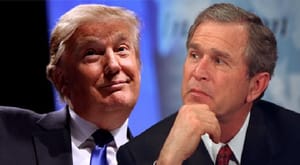
President Donald Trump has announced his intent to implement a 25% tariff on steel, and a 10% tariff on aluminium, largely consistent with what he’s been saying for decades now.
While he’s in favor of “free trade,” Trump argues that tariffs are acceptable in certain circumstances, such as when other nations place tariffs on certain goods, but we don’t (putting ourselves at a competitive disadvantage).
When a country Taxes our products coming in at, say, 50%, and we Tax the same product coming into our country at ZERO, not fair or smart. We will soon be starting RECIPROCAL TAXES so that we will charge the same thing as they charge us. $800 Billion Trade Deficit-have no choice!
— Donald J. Trump (@realDonaldTrump) March 2, 2018
Of course, retaliation is the simplest strategy from another country in response to the tariffs. If we raise the tariff on imported steel to 25%, they’ll raise the tariff on their imported steel to 26%, and so on, and so forth, as each country “one-ups” the tariff on imported goods.
We know what to expect when we put steel tariffs into effect – because George W. Bush did the same. While his tariffs did save jobs in the steel industry (those involved in the production of steel), it cost more jobs in American industries dependent on steel, who had to pay higher prices for an item they need for production.
Bush placed tariffs ranging from 8%-30% tariffs in 2002 on several types of imported steel. As a result, 1,700 jobs in the steel industry were saved. But at what cost? A study by the Peterson Institute for International Economics found that when you take into account increased prices of steel, American consumers paid $800,000 for each job “saved.” Meanwhile, the study “estimated that the steel tariffs caused at least 4,500 job losses in no fewer than 16 states, with more than 19,000 jobs lost in California, 16,000 in Texas and about 10,000 each in Ohio, Michigan and Illinois.” Imagine that you’re an auto-manufacturer, for instance, and the price of steel goes up 30% overnight. How could that not severely disrupt your business?
The situation is similar today – with far more Americans having their jobs dependent on cheap steel than dependent on the production of expensive steel. In fact, one recent report from MarketWatch noted that “there are about 140,000 steelworkers in the U.S., according to the American Iron & Steel Institute, and about 6.5 million workers in steel-consuming manufacturers, Moody’s analysts wrote in reports published Friday.”
It’ll be easy to see the tariffs helping the 140,000 workers – but we can’t forget the 6.5 million they’ll harm.
What do you think of Trump’s request for steel tariffs? Tell us your thoughts below!
